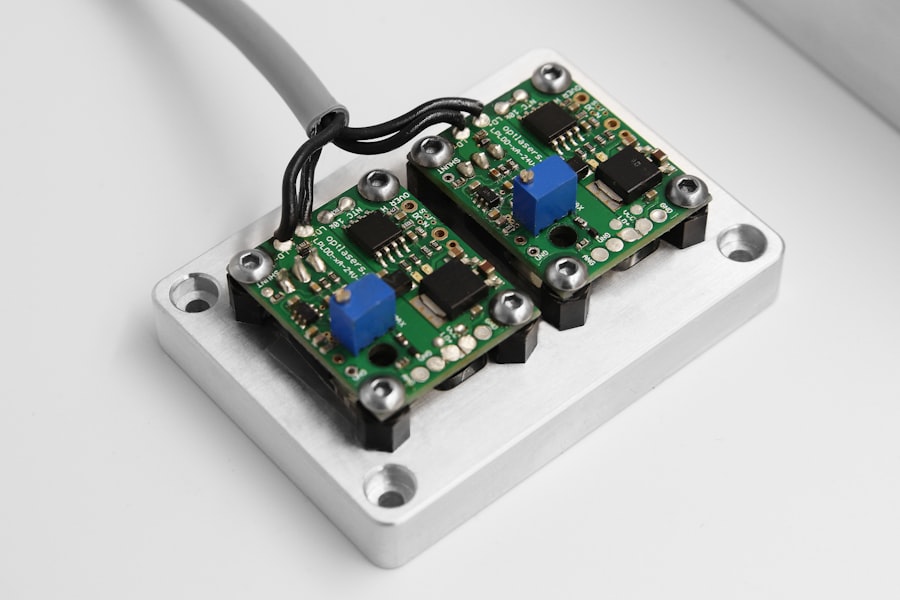Laser hair removal is a popular cosmetic procedure that utilizes concentrated beams of light to target and destroy hair follicles. The process begins with the application of a cooling gel to the treatment area, which helps protect your skin and enhance the effectiveness of the laser. Once the laser is activated, it emits light that is absorbed by the pigment in your hair.
This absorption generates heat, which damages the hair follicle and inhibits future hair growth. The procedure is generally quick, with small areas taking only a few minutes, while larger areas may require more time. As you consider laser hair removal, it’s essential to understand that multiple sessions are typically necessary for optimal results.
Hair grows in cycles, and the laser is most effective during the active growth phase known as anagen. Since not all hair follicles are in this phase at the same time, spacing your sessions appropriately is crucial to ensure that you target as many follicles as possible. This understanding will help you appreciate the importance of timing between your sessions and how it can impact your overall results.
Key Takeaways
- Laser hair removal targets hair follicles with concentrated light energy to inhibit future hair growth
- Factors affecting the optimal time between sessions include hair growth cycle, skin type, and the area being treated
- Recommended time frames for different skin types vary, with lighter skin typically requiring shorter intervals between sessions
- Adjusting time between sessions for different body areas is important, as hair growth rates can vary significantly
- Shortening or lengthening the time between sessions can increase the risk of adverse effects, such as burns or incomplete hair removal
- Tips for maximizing effectiveness include avoiding sun exposure and following pre and post-care instructions
- Consultation with a professional is crucial for personalized recommendations based on individual factors
- Following up with maintenance sessions is important to ensure long-term hair reduction and prevent regrowth
Factors Affecting the Optimal Time Between Sessions
Hair Growth Cycle: The Key to Success
Hair grows in three distinct phases: anagen (growth), catagen (transitional), and telogen (resting). The laser is most effective during the anagen phase, so scheduling your sessions to coincide with this phase is vital for achieving the best results.
Individual Factors Affecting Treatment Schedules
Depending on your individual hair growth patterns, this may mean waiting anywhere from four to eight weeks between treatments. Your skin type and hair color also play significant roles in determining the optimal time between sessions.
How Skin Type and Hair Color Impact Treatment
Darker hair tends to absorb laser energy more effectively than lighter hair, making treatments more efficient for those with darker pigmentation. Additionally, individuals with lighter skin may require shorter intervals between sessions compared to those with darker skin tones, as the contrast allows for better targeting of the hair follicles without affecting surrounding skin.
By understanding these factors, you can make informed decisions about your treatment schedule and achieve the best possible results from your laser hair removal sessions.
Recommended Time Frame for Different Skin Types

When it comes to laser hair removal, different skin types require tailored approaches regarding the timing of sessions. For individuals with fair skin and dark hair, a typical recommendation is to schedule treatments every four to six weeks. This timeframe allows for optimal targeting of hair follicles during their active growth phase while minimizing any potential side effects on the surrounding skin.
Conversely, if you have darker skin tones, you may need to extend the interval between sessions to six to eight weeks. This is because darker skin can absorb more laser energy, increasing the risk of burns or pigmentation changes if treatments are too frequent. It’s essential to consult with a professional who can assess your skin type and recommend a personalized schedule that maximizes safety and effectiveness.
For more information on laser hair removal and skin types, you can visit the American Academy of Dermatology website.
Adjusting Time Between Sessions for Different Body Areas
| Body Area | Recommended Time Between Sessions |
|---|---|
| Face | 2-4 weeks |
| Underarms | 4-6 weeks |
| Legs | 6-8 weeks |
| Bikini area | 4-6 weeks |
The body area being treated can also dictate how long you should wait between laser hair removal sessions. For instance, facial hair often grows more quickly than body hair, so you might find that scheduling sessions every four weeks is appropriate for areas like the upper lip or chin. In contrast, areas such as the legs or back may require longer intervals of six to eight weeks due to slower hair growth rates.
Additionally, some areas of the body may respond differently to treatment based on skin thickness and sensitivity. For example, underarm hair may grow at a moderate pace, allowing for a session every five to six weeks. However, sensitive areas like the bikini line might necessitate a more cautious approach, potentially extending the time between sessions to ensure your skin has adequate time to recover.
Understanding these nuances will help you create a more effective treatment plan tailored to your specific needs.
Potential Risks of Shortening or Lengthening the Time Between Sessions
While it may be tempting to shorten or lengthen the time between laser hair removal sessions based on convenience or impatience, doing so can lead to various risks and complications. If you opt for shorter intervals than recommended, you may not allow enough time for all hair follicles to enter the anagen phase. This could result in uneven hair reduction and necessitate additional treatments in the long run.
On the other hand, extending the time between sessions too much can lead to regrowth of previously treated hair follicles, which may require more sessions to achieve desired results. Additionally, waiting too long can cause your skin to become more sensitive or reactive during subsequent treatments, increasing the risk of side effects such as irritation or pigmentation changes. It’s crucial to adhere to a schedule that balances effectiveness with safety for optimal outcomes.
Tips for Maximizing the Effectiveness of Laser Hair Removal
To ensure that you get the most out of your laser hair removal treatments, there are several tips you can follow. First and foremost, avoid sun exposure before and after your sessions. Tanned skin can increase the risk of complications and reduce treatment effectiveness.
If you must be outdoors, use a broad-spectrum sunscreen with a high SPF to protect your skin. Additionally, refrain from waxing or plucking hairs in between sessions, as these methods can disrupt the hair growth cycle and hinder the laser’s effectiveness. Instead, shaving is recommended if you need to remove any regrowth before your next appointment.
Staying hydrated and maintaining healthy skin through proper moisturization can also enhance treatment outcomes by ensuring that your skin remains in optimal condition throughout the process.
Consultation with a Professional for Personalized Recommendations
Before embarking on your laser hair removal journey, it’s essential to consult with a qualified professional who can provide personalized recommendations based on your unique needs and circumstances. During this consultation, they will assess your skin type, hair color, and treatment goals to develop a tailored plan that maximizes safety and effectiveness. A professional will also take into account any medical history or skin conditions that may affect your treatment plan.
They can guide you on what to expect during each session and help you understand how many treatments you might need for optimal results. This personalized approach ensures that you receive care tailored specifically to you, increasing your chances of achieving smooth, hair-free skin.
Importance of Following Up with Maintenance Sessions
Once you’ve completed your initial series of laser hair removal treatments, it’s important not to overlook the significance of maintenance sessions.
Scheduling maintenance sessions every six months or annually can help keep unwanted hair at bay and ensure long-lasting results.
These follow-up appointments are crucial for addressing any regrowth that may occur after your initial treatments. By staying proactive about maintenance, you can enjoy smooth skin without having to undergo extensive treatments again. Remember that consistency is key; adhering to a maintenance schedule will help solidify the results you’ve worked hard to achieve through your laser hair removal journey.
In conclusion, understanding the intricacies of laser hair removal—from the process itself to factors affecting session timing—is essential for achieving optimal results. By considering individual factors such as skin type and body area while consulting with professionals for personalized recommendations, you can navigate this journey effectively. With proper care and attention to maintenance sessions, you’ll be well on your way to enjoying smooth, hair-free skin for years to come.
If you are considering laser hair removal on your face, it is important to know how long to go between sessions for optimal results. According to a helpful article on In Laser Hair Removal, the recommended time frame between sessions can vary depending on the individual and the area being treated. It is best to consult with a professional to customize a treatment plan that suits your specific needs and goals. For more information on laser hair removal options, you can contact In Laser Hair Removal or customize your interests on their website here.
FAQs
What is laser hair removal on the face?
Laser hair removal on the face is a cosmetic procedure that uses concentrated beams of light to remove unwanted facial hair.
How long should I wait between laser hair removal sessions on the face?
The recommended time between laser hair removal sessions on the face is typically 4-6 weeks. This allows the hair to enter the growth phase, making it more responsive to the laser treatment.
Why is there a recommended waiting period between laser hair removal sessions?
The waiting period between laser hair removal sessions allows the hair to grow back in the active growth phase, making it easier for the laser to target and remove the hair effectively.
Can I schedule laser hair removal sessions closer together than the recommended time frame?
It is not recommended to schedule laser hair removal sessions closer together than the recommended time frame, as this can increase the risk of skin irritation and damage.
Are there any factors that can affect the time between laser hair removal sessions on the face?
Factors such as hair thickness, skin type, and hormonal changes can affect the time between laser hair removal sessions on the face. It is important to consult with a qualified professional to determine the best schedule for your specific needs.






